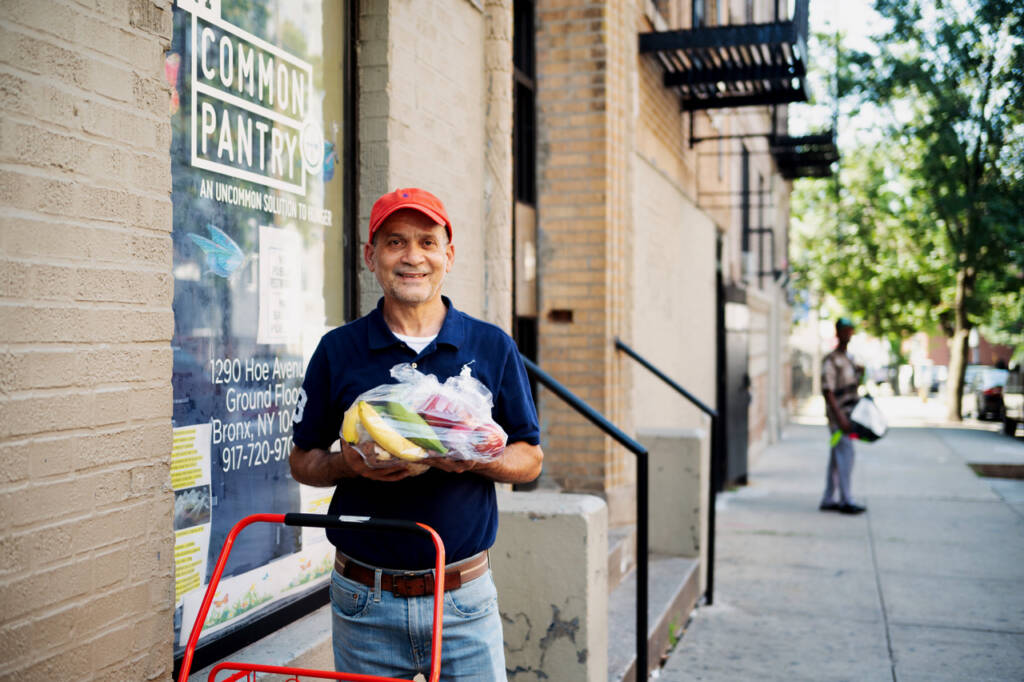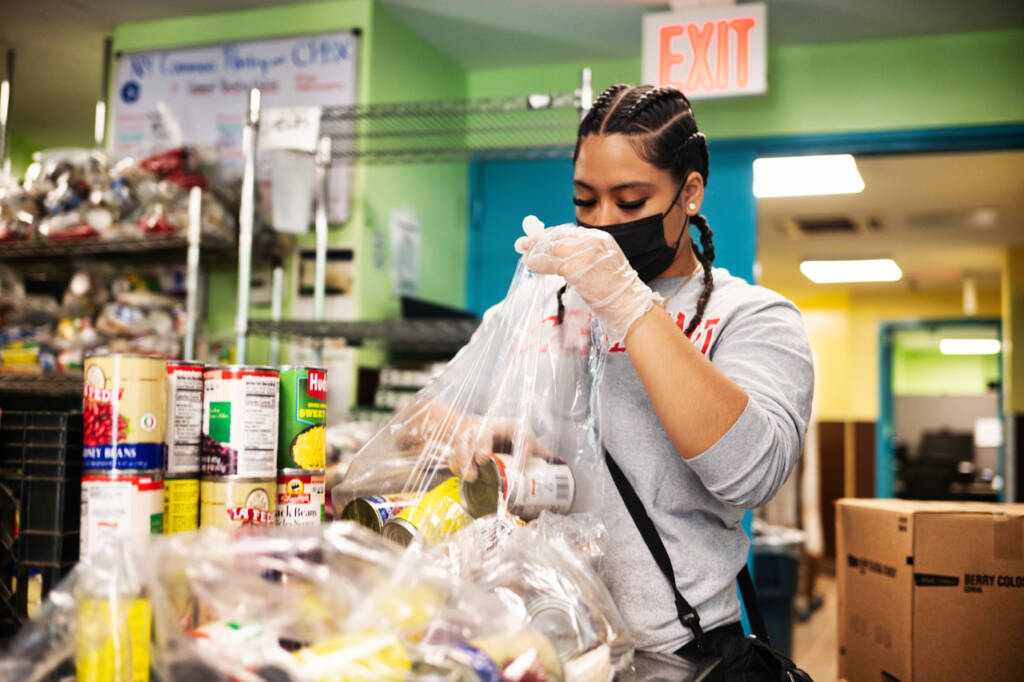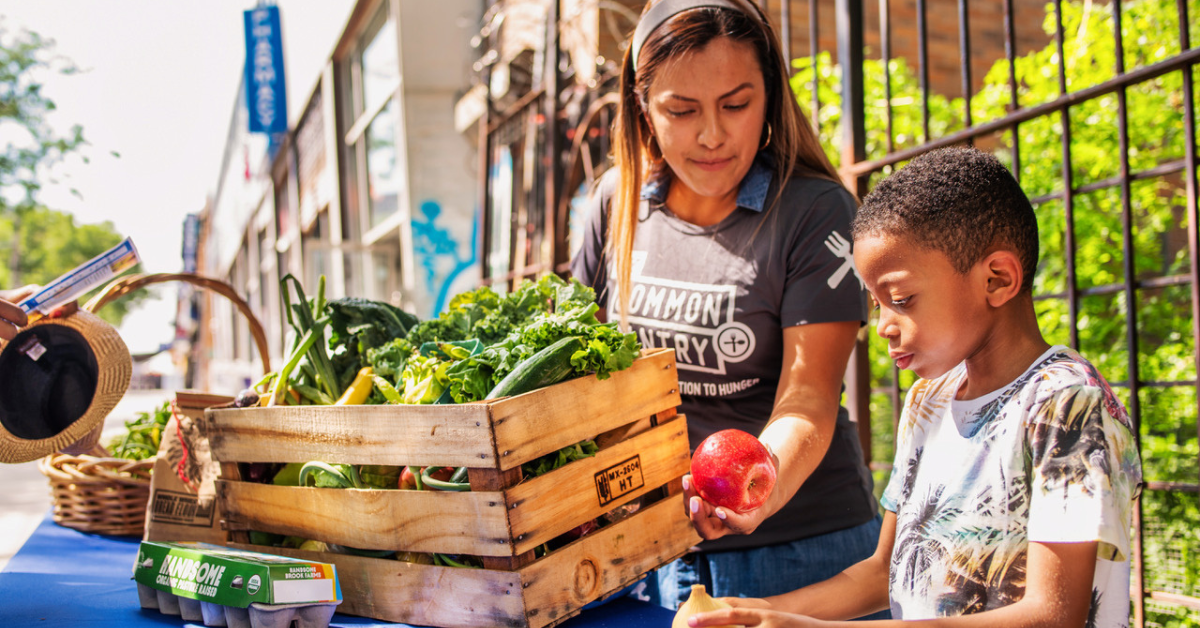Through its holistic approach, New York Common Pantry strives to nourish the bodies and minds of food-insecure individuals and families. Stop & Shop has supported this nonprofit organization through its Bloomin’ 4 Good Program.
Tell us about the New York Common Pantry.
The New York Common Pantry started as the Yorkville Common Pantry, named after a neighborhood in the Upper East Side. The organization was formed in 1980 by several churches and synagogues that wanted to ensure people in the community had something healthy to eat.
At the time, they were up against what they thought was an overwhelming homeless population. During the first year, they served 30 families in St. Joseph’s Church basement. In comparison, the New York Common Pantry served 11 million meals last year alone.
In 2012, we opened a second brick-and-mortar pantry on Hoe Avenue in the Bronx. There is a high population of people who are food insecure in the Bronx. Specifically, we wanted to be in this neighborhood since it would be easier for people to get to. Instead of having to come to Manhattan, they could access our services in their own neighborhood. As we expanded our reach into neighborhoods outside of Yorkville, we changed our name to the New York Common Pantry.
What services do you provide to the community?
At the Bronx location, we focus on providing food and case management. Our goal is to provide dignity to the people utilizing our services.
The pantry in the Bronx is part of our Choice Pantry Program. Within the five food groups, people can decide what they want and what they don’t. You do have to pick something from each food group, but we offer different items within each group so that people do not need to take items they are not interested in. If you hate tuna, you don’t have to get tuna!
People can visit the Choice Pantry every other week. The size of your pantry package is based on your household size. Everyone in your household gets approximately 12 to 13 meals from each package. We also successfully ensure that 40% of the items are fresh produce.

If you are 60 years old or over, you can join our Nourish Program. This provides additional food once a month. We mainly run this program out of our Southern Boulevard location, but we also offer mobile options. Older adults can participate in both this program and the Choice Pantry.
Lastly, we have nutrition education, which is primarily a mobile service. We also have a recipe club in a studio in the Bronx to teach people about the nutrients inside each pantry bag. If you get a bag but aren’t sure what to make with it, we will give you recipe ideas. We also make it easy to access by going live on Facebook and YouTube and posting the lessons on our website. This recipe club is particularly helpful if there is a cultural barrier. For example, maybe someone doesn’t know what a plantain is or doesn’t know how to prepare a certain dish.
Our services are not just about food, though. We also offer case management services. If you come to pick up items from a pantry or to learn more about our programs, we can screen your eligibility for Supplemental Nutrition Assistance Program (SNAP), unemployment, Supplemental Security Income (SSI), or disability benefits. We’re helping people get back on their feet by making life a little easier for these families.
What sets New York Common Pantry apart from other organizations in your community?
Our participants and pantry members tell us that they notice our intention toward dignity. We don’t try to change what somebody wants or how they want to be served. Instead, we really listen to people. We meet people where they are and help them get where they want to be. It’s not based on what we want to provide but on what they are actually asking for.
We meet people where they are and help them get where they want to be.
Our members also say that people are friendly. They feel welcome and heard. A lot of this population is used to hearing “no” from social services, so we try not to do that. Across all of our services, our only restriction is the age limitation for the Nourish Program, which is required by the federal funding we receive.
We don’t check your payroll. We don’t check your income. If you are coming to the pantry and asking for food, we assume it is because you need food. We go by your word.
If you don’t want to get screened, you don’t have to. If you want to come once, you can. If you want to come every other week for three years, you can. We try to make it as easy as possible for people to receive these services.
Tell us a story that illustrates the good work of your organization.

Mark, a young man in his late 20s, grew up in poverty. His parents were both addicts, and he didn’t have a stable household growing up. But he got into university, and once he graduated, he took a job in real estate. He made decent money, lived in his own apartment, and had relationships.
Unfortunately, as often happens when people grow up in addictive households, he had a problem with addiction. He started using alcohol and drugs, specifically heroin, to a degree where he ultimately lost everything. He was young, and everything happened really fast.
He went into treatment and heard about the hot meals program in our Manhattan location, a soup kitchen where people can grab a to-go meal or sit and eat with others. He started coming in once a day, just for those hot meals. One of our case managers noticed that he was coming in all the time and started building a relationship with him. Through this, our case manager told him about our other services that could help him.
He was living in a shelter at the time and had lost his birth certificate. We did some background information and were able to get him the documents he needed. He started trusting the people he was working with and felt comfortable sharing more about what he needed.
Ultimately, one of our case managers helped him move out of the shelter and into Section 8 housing. From there, he began coming to the Choice Pantry Program, where he got food to prepare his own meals.
Now, he is still living in that apartment. He goes running in the park every day, then comes to the pantry to pick up his package from the Choice Pantry Program. He’s dreaming of going to law school. Most importantly, he is sober and stable. He has even told us that the pantry saved his life.
Everybody needs help sometimes. His story really shows the breadth of our services, including hot meals, shower services, case management, food programs, and housing. His journey shows how coming to the pantry for one meal could change your life.
His journey shows how coming to the pantry for one meal could change your life.
What is your most outstanding achievement or contribution to the community?
Many participants come to us through word of mouth. To us, this means people had a great experience and told their friends about it. We are proud that people are going back to their buildings, shelters, schools, and workplaces, saying, “I get really great food from New York Common Pantry. They treat me really well. You should join, too!”
What do you want people to know about New York Common Pantry?
We’re here! We’re available to you, we’re open and we provide food 365 days a year
For volunteers, donors, and anyone who might need our services, please come to our locations or visit us online. We have a lot of different ways we serve our community. If you need something, reach out.
Another thing is that partnerships, like this one with Stop & Shop, matter. Having a relationship with your community and the other organizations and companies in that community helps get the word out.
How have you used the funds you’ve received from the Stop & Shop Bloomin’ 4 Good Program?
Most notably, we use these donations for food. It may sound obvious, but we need to spend more than $3 million annually on food alone. We don’t get a lot donated, so food will always be one of the biggest line items. The great thing about this program is that we can put these funds directly back into the Bronx. It creates a very circular feeling of community.
Is there anything you’d like to add?
People tend to think things went back to normal when the pandemic ended. The focus on food insecurity dissipated even though the need didn’t. Food insecurity dramatically increased in 2019 and 2020, but then, it stayed there.
The focus on food insecurity dissipated even though the need didn’t.
It’s not necessarily the same people, but the number isn’t dropping. It’s been four years, and we still have not seen a drop. Right now, one in five kids in New York City are food insecure. They are going to school hungry and can’t concentrate.
We need a better solution. We’re happy to be here to help people get what they need, but we want to work ourselves out of a job. The problem needs to be solved.

Interview with Deana Murtha, Senior Director of Development and Communications
Published December 11, 2024.
